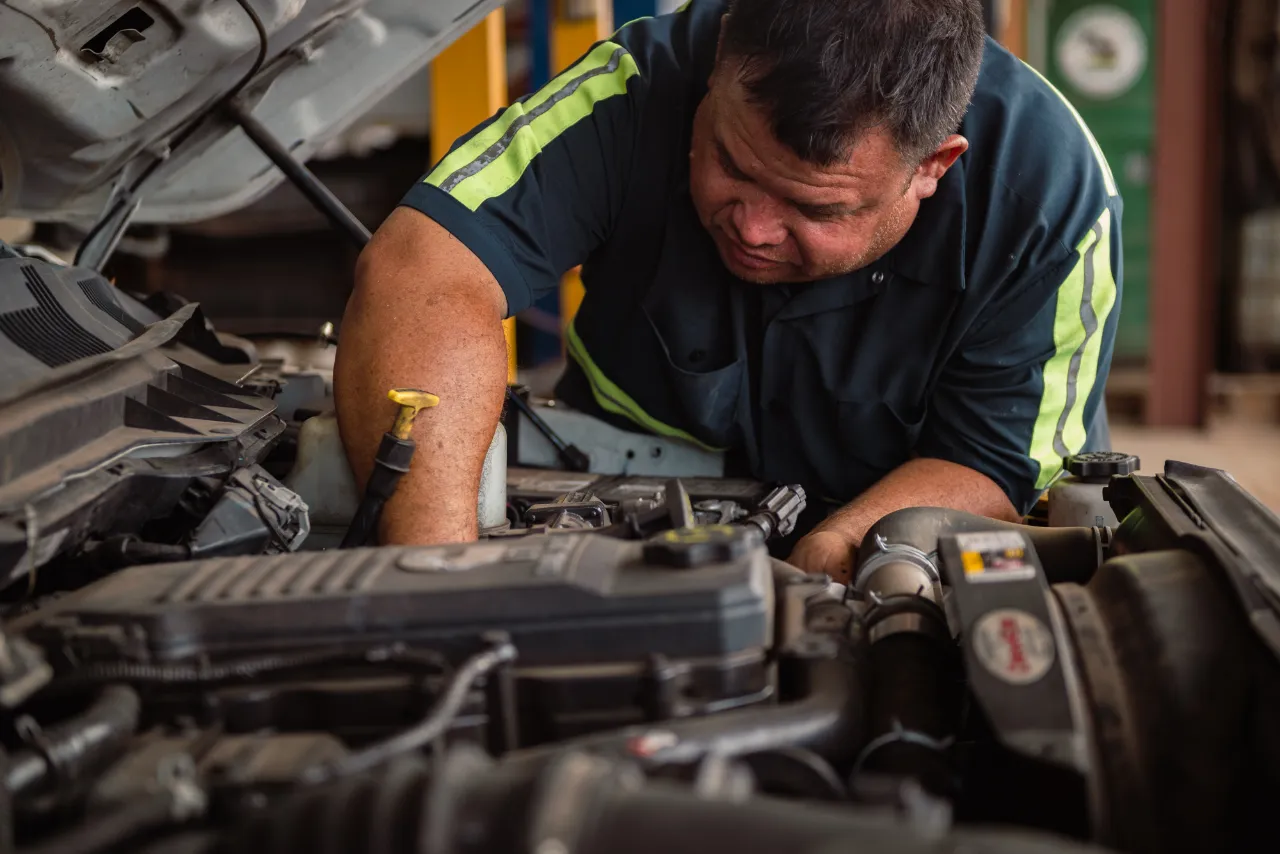Contact us
Hours: Monday to Friday, 7am - 3:30pm



Effective thermal management protects power, emissions hardware, and uptime. In Kapolei’s humid, marine climate, proper cooling for your diesel engine is not optional; it is a foundational maintenance practice. This guide explains how the diesel cooling system functions, which inspections matter most, and how to adapt service intervals to Hawaii’s operating conditions.
A modern diesel cooling system removes combustion heat and maintains a stable operating temperature through three coordinated circuits: the primary engine-coolant loop, the auxiliary oil cooler, and the transmission cooler circuits. The primary loop includes the radiator, water pump, thermostat, and a controllable fan clutch. Auxiliary circuits help dissipate additional heat so the primary system isn't overwhelmed under load.
Engine coolant—a mix of water and antifreeze specified by the manufacturer—flows from the reservoir through the engine block and cylinder head, absorbing radiant heat before returning to the radiator. Since formulations vary, follow the particular chemistry and ratio recommended for your vehicle. The belt-driven water pump pushes coolant through internal passages; as coolant ages and its additives diminish, heat absorption drops, making regular replacement at specified intervals crucial.
Once heated coolant reaches the radiator, air passing through the core absorbs heat. At higher speeds, ram air usually suffices; at idle or slow traffic, the fan clutch engages the cooling fan to maintain airflow across the core. This on-demand system prevents energy waste at highway speeds while protecting the temperature during low-airflow conditions typical of stop-and-go city driving.
Auxiliary coolers further decrease thermal load. The transmission cooler directs hot fluid through finned passages to facilitate heat dissipation via convection, which enhances longevity and performance during high-temperature or towing conditions. Similarly, the oil cooler enables engine oil to absorb heat and release it to ambient air, maintaining proper viscosity and safeguarding bearings under heavy loads.
Kapolei combines heat, humidity, and salt-laden air. These factors speed up fin corrosion on the radiator and auxiliary coolers, obscure small leaks, and cause the fan clutch to stay engaged more often in traffic. Dust from red dirt sites and green waste can clog cooler stacks. The takeaway is simple: schedule more frequent airflow cleaning, surface inspections, and coolant-quality checks than you would in a temperate, inland region.
Adopt a disciplined, visual walk-around with the engine cool:
These checks take minutes yet prevent most surprise overheating events.
Perform the following steps at least monthly or every 8,000–10,000 miles, whichever comes first; increase frequency for severe service:
Change the coolant according to manufacturer specifications; age and heat break down inhibitors and lower heat capacity, weakening thermal control. Combine coolant replacement with a system flush when switching chemistries or after contamination. Incorporate these tasks into a preventive maintenance schedule to reduce breakdowns and extend service life.
Do not ignore auxiliary fluids. Transmission service helps the transmission cooler reject heat during towing or steep grades, which are common on O‘ahu’s west side. Fresh engine oil, working together with the oil cooler, carries and disperses heat while lubricating, a dual role often seen in heavy-duty use.
Use operating symptoms to target diagnostics rather than replacing parts indiscriminately:
Field experience and industry guidance also link roadside overheating to a malfunctioning fan clutch, a plugged radiator, or a failed water pump—problems that worsen quickly if left unaddressed.
Adopt objective measurements to validate findings:
In a salt-air environment, corrosion reduces fin efficiency and promotes galvanic decay. After cleaning, consider a radiator-safe corrosion inhibitor to slow fin oxidation. Always clean the entire stack, not just the radiator face; contaminants frequently lodge between the condenser and charge-air cooler. Incorrect use of high-pressure washers can fold fins and restrict airflow—avoid close-range spraying.
Operational demands may justify targeted upgrades:
Before leaving Kapolei, verify:
Cooling is a systemic process. Continuous airflow, proper pressure control, correct fluid chemistry, and verified component function keep the thermal load within design limits. By combining routine inspections with data-driven diagnostics—and adjusting intervals to Hawai‘i’s climate—you significantly reduce overheating risk, protect expensive components, and extend engine life. Incorporating these practices into a preventive maintenance program further reduces downtime and maintains total cost of ownership benefits for commercial fleets.
For a thorough cooling system check, pressure testing, and stack cleaning suited to island conditions, schedule a visit with Impulse Repair in Kapolei. A careful inspection today helps prevent expensive thermal failures later.

